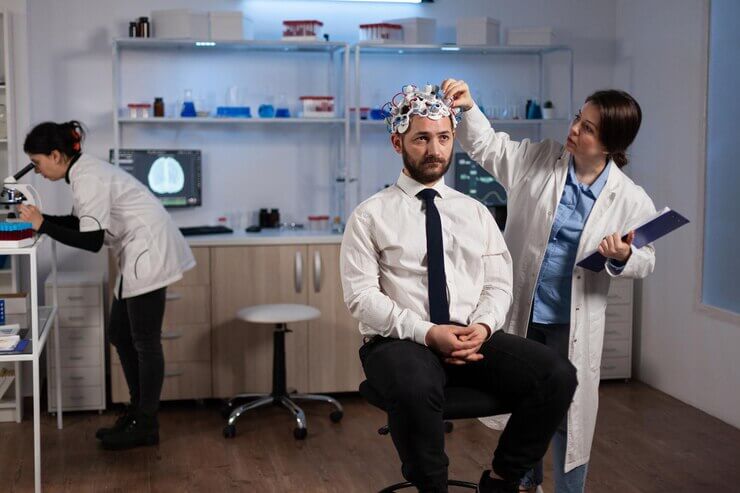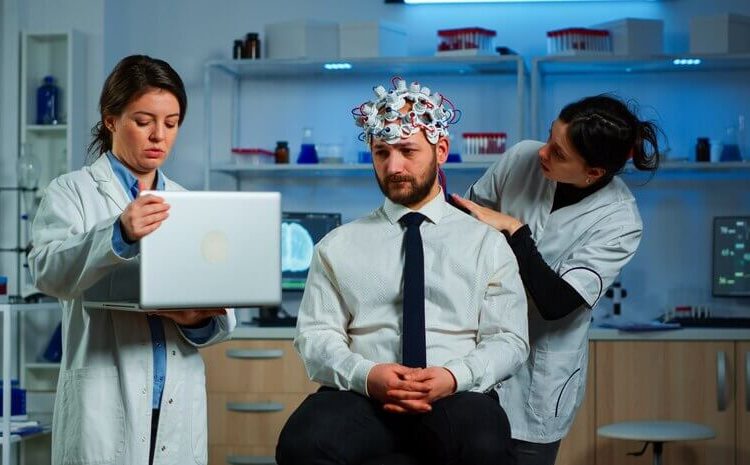Every year, millions of people around the world are affected by brain damage. Most brain lesions fall into two distinct categories: Acquired Brain Injury (ACL) and Traumatic Brain Injury (BTC). Acquired brain lesions are non-hereditary, congenital, degenerative or caused by birth trauma. Acquired brain injury is a brain injury that occurs after birth. Sometimes there is confusion about what is considered a brain injury.
By definition, any traumatic brain injury (for example, by an accident or a vehicle attack) can be considered as caused by a brain injury. In the field of brain damage, brain damage is generally considered a surprise. Examples of brain damage involving stroke, near drowsiness, hypoxic or anoxic brain damage, tumor, neurotoxin, electric shock or lightning.
TBI is defined as a change in brain function or other indication of a cerebral pathology caused by an external force. It was adopted in 2011 by the Board of Directors of the Brain Injury Association. This definition is not intended to be exclusive to the population served by the Brain Injury Association of America. Our brain controls most of our body’s functions. After a brain injury, many parts of the brain work as usual and others do not.
The damage can range from very easy to very difficult. The result is that the function of the brain can be slightly incoherent and inconsistent. No one suffers the same harm, although the survivors suffer many typical effects. It can be very difficult to determine if a brain injury affects only one person. We often talk about an “invisible wound” because most problems are related to thought and emotions. Family members, friends, and professionals can not “see” the damage to your brain, which can cause overwhelming disappointment for everyone.
A brain injury is damage that causes damage or damage to brain cells. Each year, approximately 2.6 million people in the United States suffer from certain types of brain injury, whether due to trauma, stroke, tumor, or other Brain Injury diseases. Association of America.
Approximately 52,000 people die as a result of head brain trauma and more than 5 million Americans suffering from head trauma need help with their daily chores. According to the National Stroke Association, approximately 130,000 Americans die each year from a stroke. Any damage to the brain is damage to the head.
However, head injuries do not necessarily damage the brain. There are two types of brain damage: traumatic brain injury and brain damage. Both interrupt the normal functioning of the brain. Traumatic Brain Injury (TBI) is caused by an external force, such as a punch in the head, which causes the brain to move into the skull or injure itself.
It hurts the brain.Brain damage occurs at the cellular level. It is often associated with pressure in the brain. It can come from a tumor. This can also result from a neurological disorder, as in the case of a stroke.
The same brain damage and acquired brain damage occurred after birth. And nothing goes down. Sometimes two terms are synonymous. There are certain types of brain damage caused by genetics or trauma at birth. This is called natural brain damage. However, it does not include the current definition of brain injury or traumatic brain injury.
Some brain lesions cause focal or localized brain damage, for example. For example, damage caused when a bullet enters the brain. In other words, the damage is limited to a small area. Injuries to head injuries often result in brain damage that spreads to many parts of the brain.
For example, both parts of the brain have been damaged and the nerves throughout the brain’s tension. This is called a diffuse axonal injury or ICD. The severity of brain damage may vary depending on the type of brain injury. Temporary brain damage may be temporary. It causes headaches, confusion, memory problems and nausea. With moderate brain damage, symptoms can last longer and more clearly.
Brain injury is usually the result of violent blows or blows to the head or body. A thing that gets into the brain tissue, for example. B. An arched ball or skull may also cause traumatic brain injury. Temporary traumatic brain damage can temporarily affect your brain cells. More serious traumatic brain injury can cause bruising, tissue tearing, bleeding, and other physical damage to the brain.
These injuries can lead to long-term complications or death. Brain injuries can have major physical and psychological effects. Some signs or symptoms may appear immediately after a traumatic event, while others may occur days or weeks later.Mild traumatic brain injury, The signs and symptoms of mild traumatic brain injury may be: Physical symptoms, loss of consciousness in seconds to minutes
There is no loss of consciousness, but a state of nausea, confusion or disorientation
headache
Nausea or vomiting
Tired or sleepy
Language issues
Difficult sleep
Less sleep than usual
Dizziness or loss of balance
Symptoms of sensation
Feelings like visual disturbances, tinnitus, bad breath, or changes in smells
Sensitivity to light or sound
Cognitive or mental symptoms
Memory or concentration problems
Mood swings or mood swings
Feeling depressed or anxious
Moderate to severe traumatic brain injury
Moderate to severe traumatic brain injury may include all signs and symptoms of mild injury, as well as the following symptoms, which may occur from the first hour to the day following head trauma:Physical symptoms, lack of consciousness from minutes to hours
Repeated headache or headache increases
Nausea or repeated nausea
Confusion or confiscation
Disable one or both students
Clear liquid flowing from the nose or ear
Loss of the ability to wake up from sleep
Lack or numbness of fingers and toes
Loss of coordination
Cognitive or mental symptoms
Deep confusion
Conflict, readiness or other unusual behavior
Clear speech
Coma and other disorders of consciousness
Symptoms of children
Infants and children with brain damage may not report headaches, sensory problems, confusion or similar symptoms. In a child with traumatic brain injury, you can observe the following:
Change care or care habits
Uncommon or slight irritation
Continuous tears and incompetence to be entertained
Change the ability to pay attention
Change sleep habits
seizures
Lonely or sad mood
sleepy
Loss of interest in favorite toys or activities,When did a doctor visit?Always consult your doctor if you or your child has been hit by a head or body that affects you or causes changes in behavior. Consult an emergency physician for signs or symptoms of traumatic brain injury after a recent stroke or traumatic head injury. A mild brain injury is a serious injury that requires immediate attention and accurate diagnosis.
Cause, Brain injury is usually caused by a stroke or other traumatic injury to the head or body. The extent of damage can depend on many factors, including the type of injury and the strength of the effect.
Common events causing traumatic brain injury are: Falls. The fall of the bed or ladder, stairs, tubs and other falls is the most common cause of total traumatic brain injury, especially in adults and young children. Vehicle collisions. Collisions with cars, motorcycles or bicycles – and pedestrians involved in such accidents – are a common cause of traumatic brain injury.
Violence. Injury injuries, domestic violence, child abuse and other abuses are common causes. Shaken Baby Syndrome is a traumatic brain injury in infants caused by a violent shock.Sports injury. Traumatic brain injury can be caused by a number of sports, including football, boxing, football, baseball, lacrosse, skateboarding, hockey and other high impact or extreme sports. These are more common among young people.
Explosive explosions and other combat damage. Explosions are a common cause of traumatic brain injury in active military personnel. The researchers believe that even though they are not yet aware of how the damage is occurring, the pressure waves that propagate through the brain significantly disrupt its function. Brain injury also results from acute injuries, heavy blows with bursts or debris in the head and falls or a physical collision with objects after the explosion.
Risk factors
Those most at risk for traumatic brain injury include:
Children, especially newborns up to 4 years old
Young adults, especially between 15 and 24 years old
Seniors from 60 years old
Men in each age group
complications
Immediately or soon after traumatic brain injury, some complications may occur. Serious damage increases the risk of more serious and serious complications.
Conscious change, Serious, severe, traumatic brain injury may result in permanent changes in consciousness, awareness, or responsiveness. The different states of consciousness include: Coma. A person in a coma is unconscious, ignorant and can not respond to any stimulus. This results in extensive damage to all parts of the brain. After a few days to a few weeks, a person may appear in a coma or not be vegetative. Vegetative state. Generalized brain damage can lead to a state of inactivity. Although the person does not know the environment, they can open their eyes, make sounds, respond to reflexes or move.
It is possible that a vegetative state is permanent, but people often come to a state of low consciousness. Some sad situations. A minimal state of consciousness is a state of consciousness completely changed with some signs of self-awareness or awareness of one’s environment. It is sometimes a transient state of coma or an inactive state to a better recovery. Death of the brain.
If there is no measurable brain activity or brainstem, we are talking about brain death. In a person diagnosed with brain death, withdrawal of the respiratory system results in respiratory and respiratory failure. The death of the brain is considered irreversible. Physical complications, Opportunities. Some people with traumatic brain injury develop convulsions. Seizures can occur only at the beginning or several years after the injury. Repeated seizures are called post-traumatic epilepsy.
Prevent falls; the following tips can help seniors avoid falling at home: Install handrails in bathrooms, Place a non-slip mat in the bath or shower, Remove carpets, Attach the handrails on both sides of the stairs,Improve home lighting,Keep the stairs and the floor uncluttered,Do you check regularly,Exercise regularly,Prevent head injuries in children.
CONCLUSIONS
The accumulation of fluid in the brain (hydrocephalus). Fluid fluid can accumulate in the cerebrospinal cells of brain cells (cerebral ventricles) of some people who have suffered traumatic Brain injury, resulting in increased pressure and inflammation of the brain. Infections. The skull or acute wounds can damage the layers of protective tissue (meninges) surrounding the brain.
This allows the bacteria to invade the brain and cause infections. Infection of the meninges (meningitis) can be transmitted without treatment in the rest of the nervous system. Prevention Follow these tips to minimize the risk of brain damage: seat belts and airbags. Always wear a seatbelt in a car. A small child should always sit behind the seat of a car securely attached to a child seat or booster seat, depending on its size and weight.
Consumption of alcohol and drugs. Do not drive under the influence of alcohol or drugs, including prescription drugs that may affect your ability to drive. Helmets. Wear a helmet when riding a bike, skateboard, motorcycle, snowmobile or all-terrain vehicle. Wear an appropriate headgear for baseball, contact sports, skiing, and skating, snowboarding or horse riding.
REFERENCES
* Rehman T, Ali R, Tawil I, Yonas H (2008). “Rapid progression of traumatic bifrontal
contusions to transtentorial herniation: A case report”. Cases Journal. 1 (1): 203.
doi:10.1186/1757-1626-1-203. PMC 2566562. PMID 18831756.
*TBI: Get the Facts”. CDC. March 11, 2019. Retrieved May 28, 2019.
*Traumatic Brain Injury”. medlineplus.gov. Retrieved May 28, 2019.
*Prevention”. CDC. March 4, 2019. Retrieved May 28, 2019.
* Alves OL, Bullock R (2001). “Excitotoxic damage in traumatic brain injury”. In Clark RS,
Kochanek P (eds.). Brain injury. Boston: Kluwer Academic Publishers. p. 1. ISBN 978-0-7923-
7532-6.
*Chapman SB, Levin HS, Lawyer SL (1999). “Communication problems resulting from brain
Injury in children: Special issues of assessment and management”. In McDonald S, Togher L,
Code C (eds.). Communication Disorders Following Traumatic Brain Injury. East Sussex:
Psychology Press. pp. 235–36. ISBN 978-0-86377-724-0.
*Jennett B (May 1998). “Epidemiology of head injury”. Archives of Disease in Childhood. 78
(5): 403–06. doi:10.1136/adc.78.5.403. PMC 1717568. PMID 9659083.





